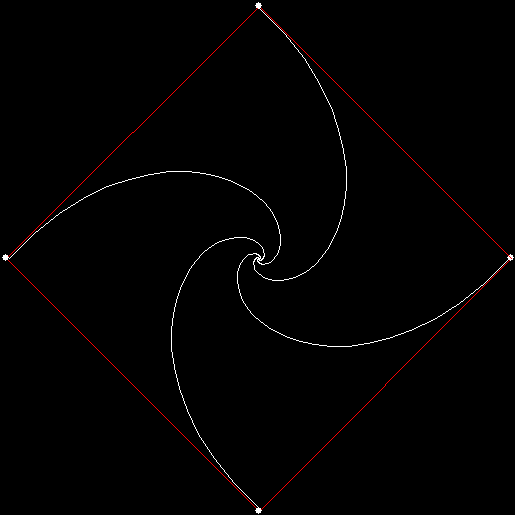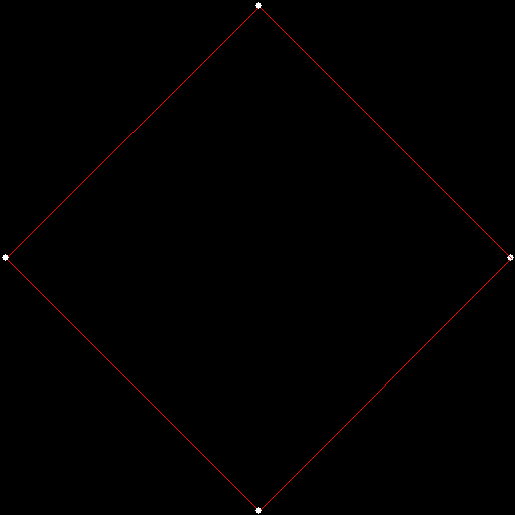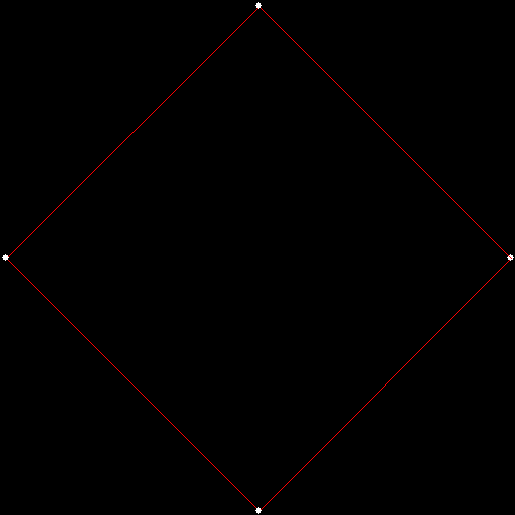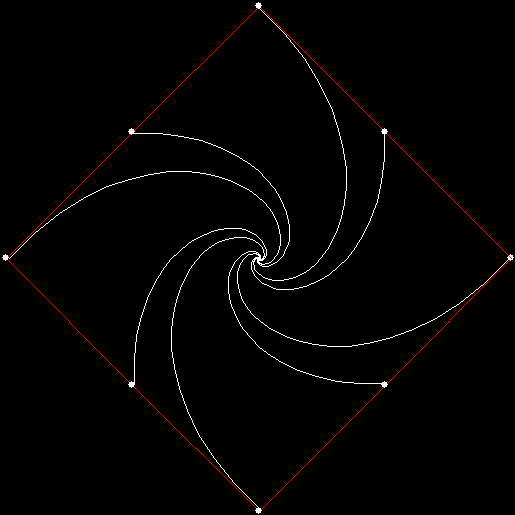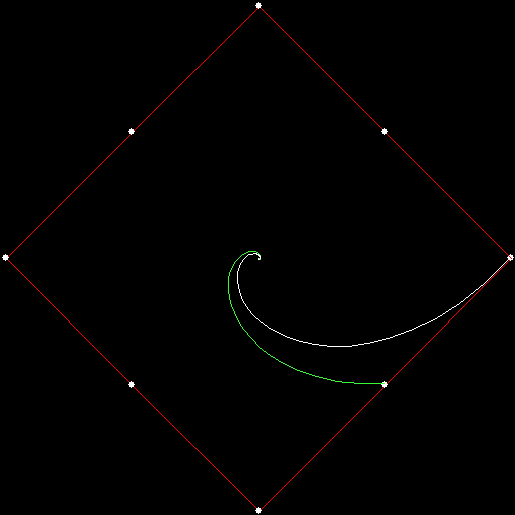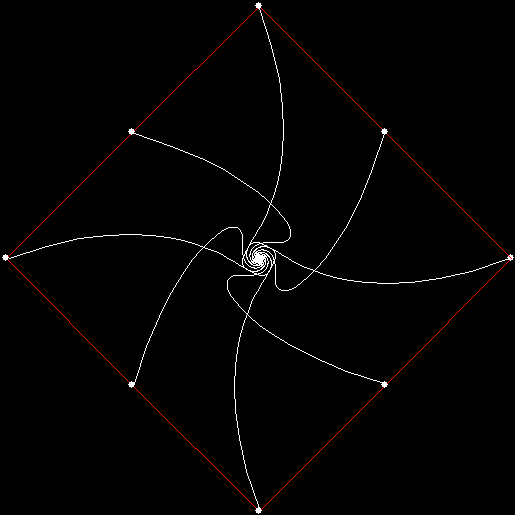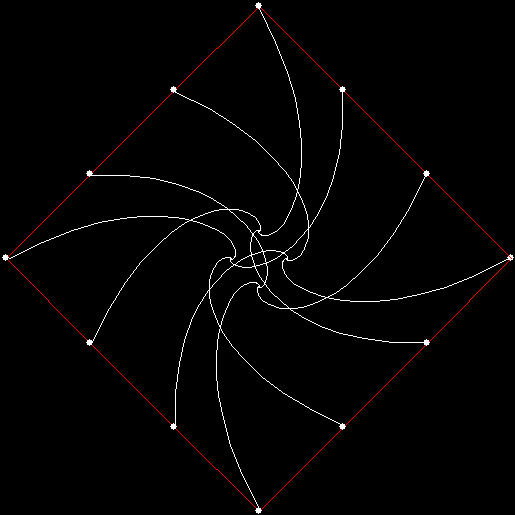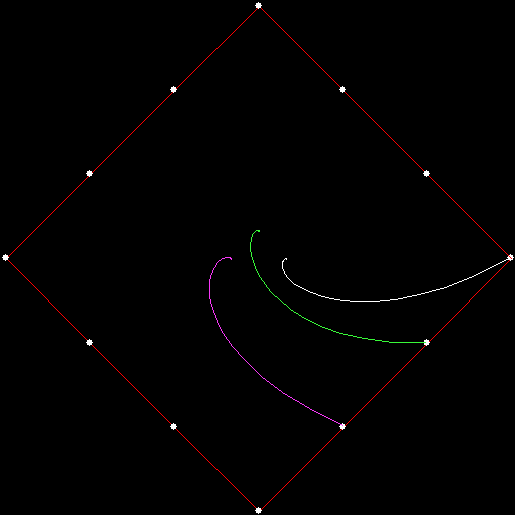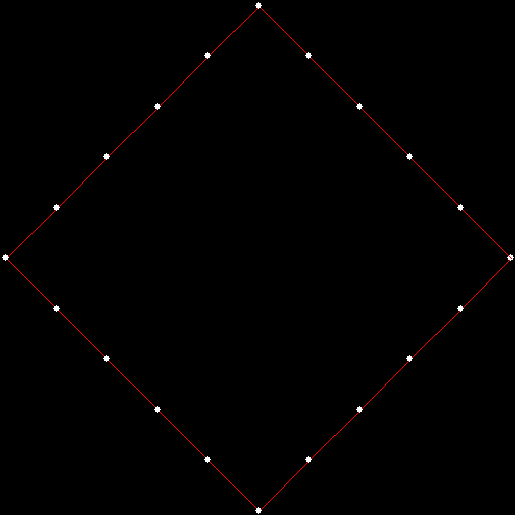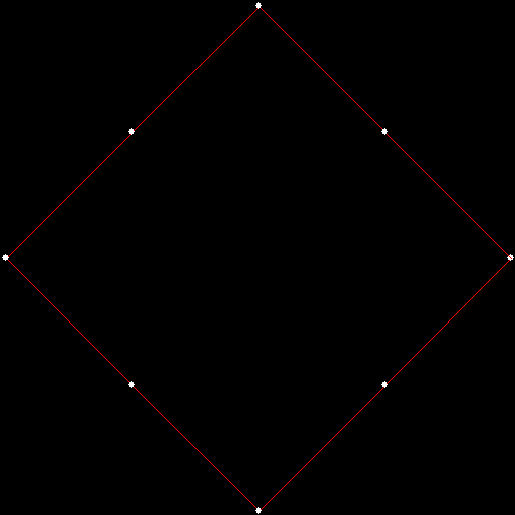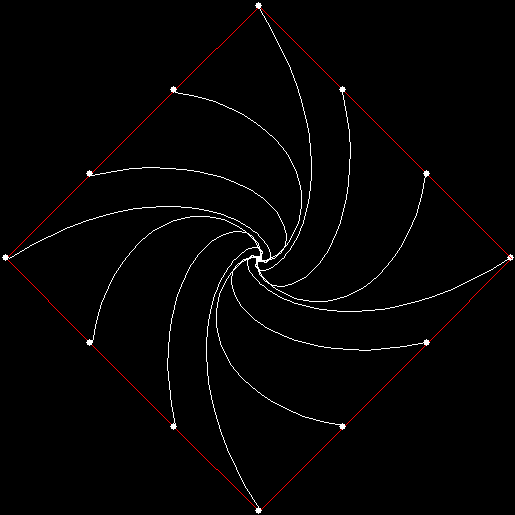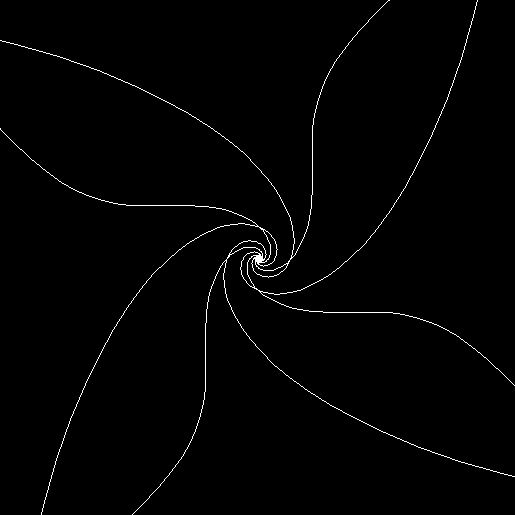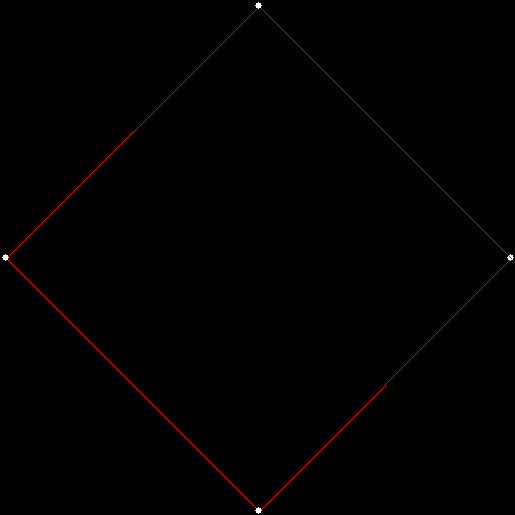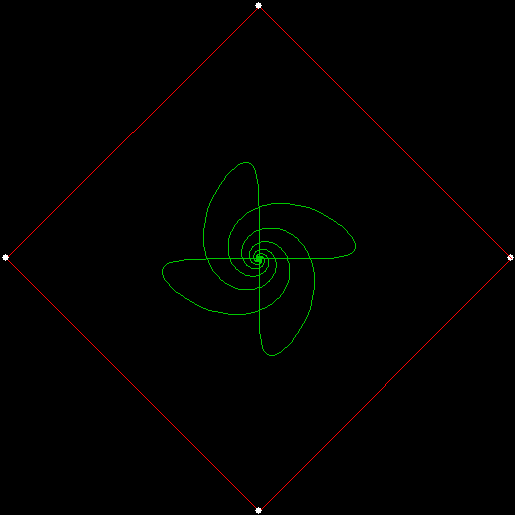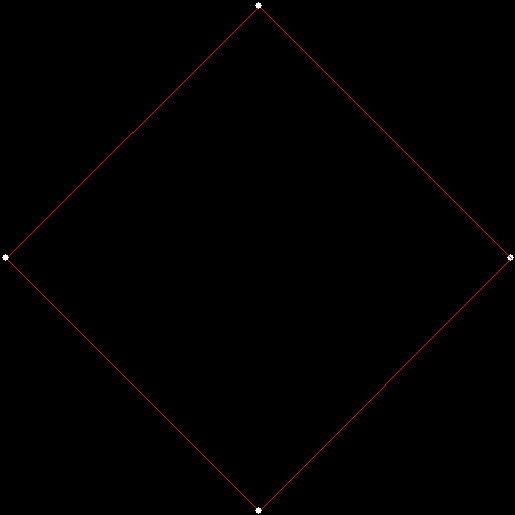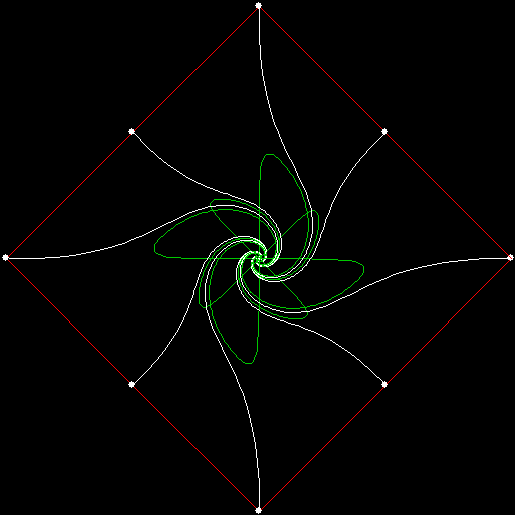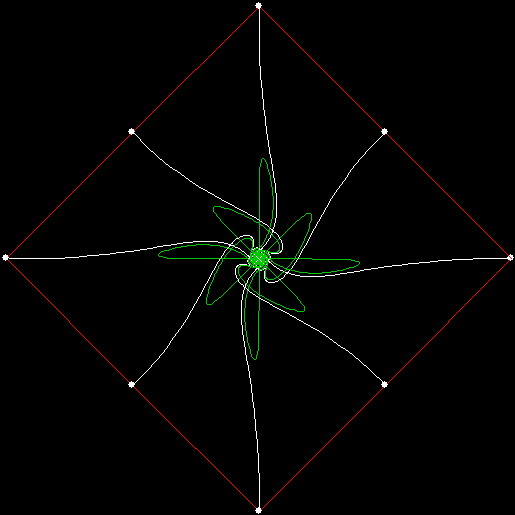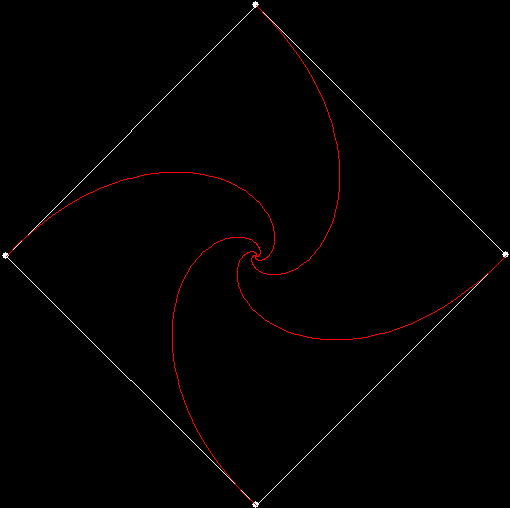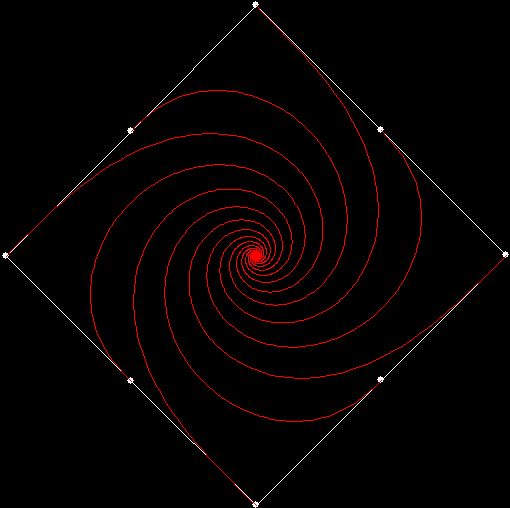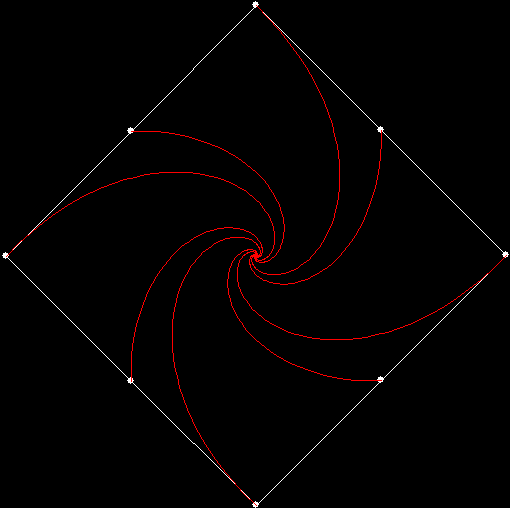Twice before on Overlord-in-terms-of-Core-Issues-around-Maximal-Engagement-with-Key-Notions-of-the-Über-Feral, I’ve interrogated issues around pursuit curves. Imagine four mice or four beetles each sitting on one corner of a square and looking towards the centre of the square. If each mouse or beetle begins to run towards the mouse or beetle to its left, it will follow a curving path that takes it to the centre of the square, like this:
vertices = 4, pursuit = +1
The paths followed by the mice or beetles are pursuit curves. If you arrange eight mice clockwise around a square, with a mouse on each corner and a mouse midway along each side, you get a different set of pursuit curves:
v = 4 + 1 on the side, p = +1
Here each mouse is pursuing the mouse two places to its left:
v = 4+s1, p = +2
And here each mouse is pursuing the mouse three places to its left:
v = 4+s1, p = +3
Now try a different arrangement of the mice. In the square below, the mice are arranged clockwise in rows from the bottom right-hand corner. That is, mouse #1 begins on the bottom left-hand corner, mouse #2 begins between that corner and the centre, mouse #3 begins on the bottom left-hand corner, and so on. When each mice runs towards the mouse three places away, these pursuit curves appear:
v = 4 + 1 internally, p = +3
Here are some more:
v = 4 + i1, p = +5
v = 4 + i2, p = +1
v = 4 + i2, p = +2
So far, all the mice have eventually run to the centre of the square, but that doesn’t happen here:
v = 4 + i2, p = 4
Here are more pursuit curves for the v4+i2 mice, using an animated gif:
v = 4 + i2, p = various (animated — open in new tab for clearer image)
And here are more pursuit curves that don’t end in the centre of the square:
v = 4 + i4, p = 4
v = 4 + i4, p = 8
v = 4 + i4, p = 12
v = 4 + i4, p = 16
But the v4+i4 pursuit curves more usually look like this:
v = 4 + i4, p = 7
Now try adapting the rules so that mice don’t run directly towards another mouse, but towards the point midway between two other mice. In this square, the odd- and even-numbered mice follow different rules. Mice #1, #3, #5 and #7 run towards the point midway between the mice one and two places away, while ice #2, #4, #6 and #8 run towards the point midway between the mice two and seven places away:
v = 4 + s1, p(1,3,5,7) = 1,2, p(2,4,6,8) = 2,7
I think the curves are very elegant. Here’s a slight variation:
v = 4 + s1, p1 = 1,3, p2 = 2,7
Now try solid curves:
v = 4 + s1, p1 = 1,3, p2 = 2,7 (red)
v = 4 + s1, p1 = 1,3, p2 = 2,7 (yellow-and-blue)
And some variants:
v = 4 + s1, p1 = 1,7, p2 = 1,2
v = 4 + s1, p1 = 2,3, p2 = 2,5
v = 4 + s1, p1 = 5,6, p2 = 1,3
v = 4 + s1, p1 = 5,6, p2 = 1,4
v = 4 + s1, p1 = 5,6, p2 = 1,6
Elsewhere other-posted:

























